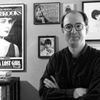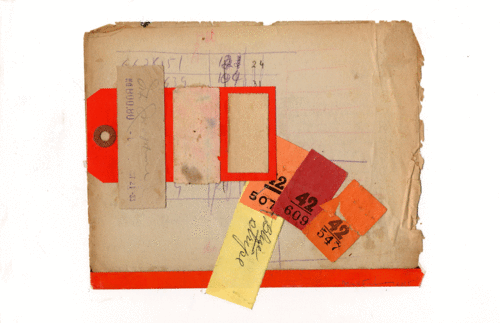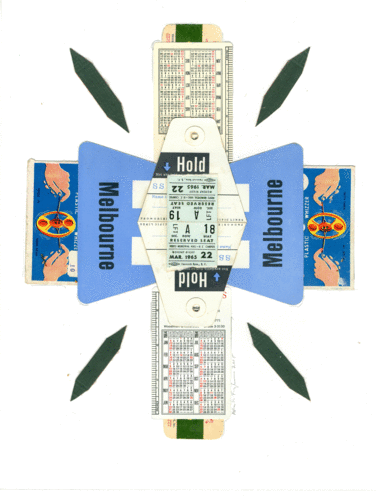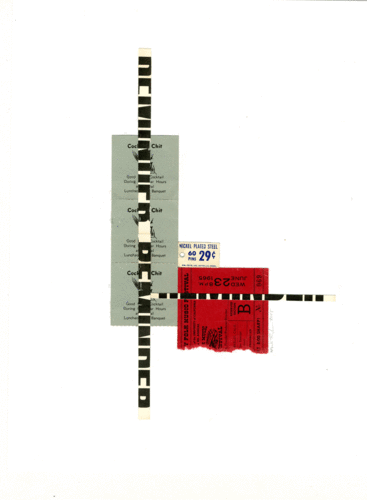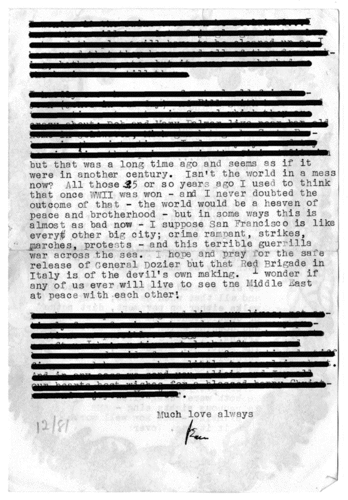Photographs, a stub from a coat check, an envelope, a concert ticket, yellowing note cards, matchbooks, an old receipt, those small paper calendars carried in wallets and purses, a handwritten note, baggage tags, a letter, the wrapper from a child's toy.
Each of these scraps of forgotten paper might suggest a memory, a story, a history.
Inspired by items found in books returned or donated to the Jewish Community Library in San Francisco, local artist Mark Faigenbaum has created an evocative series of collages and large format blow-ups that explore memory and meaning through ephemera forgotten in books.
Faigenbaum's "Book/Marks: What We Leave Behind" is on view at the Jewish Community Library through March 13. It is a thoughtful exhibit at times both poignant and elusive.
"Book/Marks" springs from a collection of ephemera at the Jewish Community Library. Five years ago, a librarian there came across a bar mitzvah photograph tucked between the pages of a recently donated book. It was saved. Over time, a collection of similarly once forgotten and now found material grew to include all manner or printed and handwritten material, from foreign currency to private notes, claim checks and more.
One way to think about this exhibit is to think about the meaning of bookmarks, as evoked in the title to Faigenbaum's installation. Traditionally, they are strips of printed paper used to mark one's passage through a book. Here, they are miscellaneous items of varying value recruited impromptu from daily life.
Collage is the act of assembling or arranging seemingly unrelated items, and in doing so, creating relationships between assembled objects. Collage assumes a degree of faith - a belief in the ability to establish meaning through juxtaposition. Whether that meaning is found, or created, is a matter of debate, and philosophy.
Besides faith, collage also requires "persistence of vision," to adapt a term from the cinema. As a craft, collage dates back hundreds of years, but emerged as an art form in the early years of the 20th century, most notably in the hands of Picasso and Braque.
In Faigenbaum's hands, this persistence of vision strives, nearly, toward the mystical. In his artist statement, Faigenbaum commented, "I'm drawn to the ephemeral quality of old newspapers, discarded letters, cards, old paper and the remains of outdated technology and mechanisms. These remnants of the past individually may appear random and out of context, but when printed, layered, and sewn together, a kind of alchemy occurs. Patterns begin to emerge, new connections are created hinting at a greater whole and at the same time these remnants emerge as reminders of the impermanent nature of this world and our place in it."
Spanning a few dozen works, "Book/Marks" is two exhibits. One part consists of Faigenbaum's evocative collaged ephemera, like "Royal Hotel," which includes tags and a letter in German. Here, perhaps, are the remains of desire - to travel, for romance, to live an adventure, or just simply navigate a day in a life.
The other part consists of unframed, black-and-white, enlarged photocopies of found objects: pages from books with notes in their margins, underlined poems, the middle section of a letter. Unlike the collages, whose meaning is orientated, these found objects find their meaning within their presentation.
Faigenbaum is a San Francisco artist who works in mixed media, collage, and printmaking. His work has been shown internationally, and he has twice been an artist in residence at the Fine Arts Museums of San Francisco.
His residency at Recology SF (San Francisco Recycling and Disposal) resulted in a bold, near symphonic exhibit whose genesis was not dissimilar to the chamber piece-like works on view at the Jewish Community Library. Recently, the artist finished 100 small collage pieces for Bagazine #6, a project by X-Ray Book Company that includes original work from more than 30 artists.
"Book/Marks: What We Leave Behind" remains on view at the Jewish Community Library (1835 Ellis Street) in San Francisco through March 13, 2016. A reception with the artist is set to place on Thursday, January 21 from 5:00 pm to 8:00 pm, with remarks from the artist at 6:30 pm.
Thomas Gladysz is a San Francisco arts journalist. A longtime critic, his writings on the visual arts have appeared in many Bay Area publications. Gladysz's interview with Allen Ginsberg was included in Beat Memories: The Photographs of Allen Ginsberg, the catalog for the National Gallery of Art exhibit which appeared at the Contemporary Jewish Museum in San Francisco.
